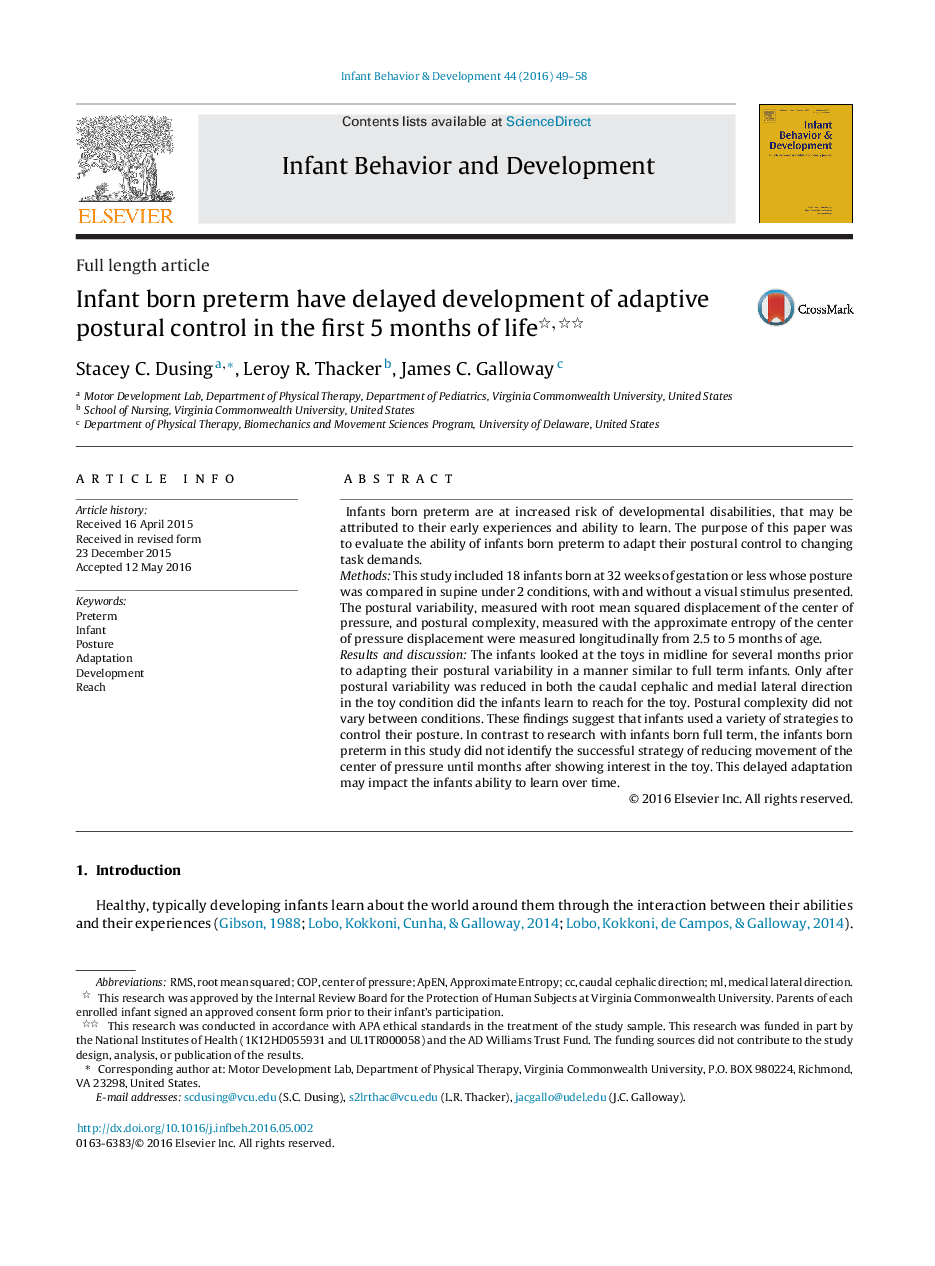| Article ID | Journal | Published Year | Pages | File Type |
|---|---|---|---|---|
| 7273170 | Infant Behavior and Development | 2016 | 10 Pages |
Abstract
The infants looked at the toys in midline for several months prior to adapting their postural variability in a manner similar to full term infants. Only after postural variability was reduced in both the caudal cephalic and medial lateral direction in the toy condition did the infants learn to reach for the toy. Postural complexity did not vary between conditions. These findings suggest that infants used a variety of strategies to control their posture. In contrast to research with infants born full term, the infants born preterm in this study did not identify the successful strategy of reducing movement of the center of pressure until months after showing interest in the toy. This delayed adaptation may impact the infants ability to learn over time.
Keywords
Related Topics
Life Sciences
Neuroscience
Behavioral Neuroscience
Authors
Stacey C. Dusing, Leroy R. Thacker, James C. Galloway,
